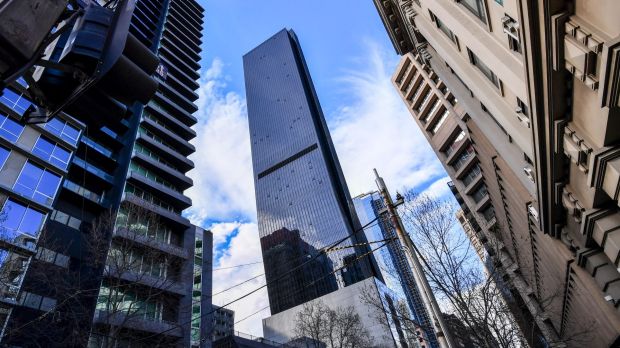
The rush to build new homes has raised concerns about the cutting of corners to save costs. Photo: Dominic Lorrimer
Melbourne’s surging population in recent years has had a number of ramifications. The impact is being felt on the transport and health systems, and the transformation of the city skyline through at times short-sighted development. Much of this has been well documented, though not resolved. Less understood is the damage being done in the rush to build new homes to house the city’s new residents.
As The Age has revealed, there are serious concerns about the quality of buildings that have been going up in parts of the city this century. Experts warn that the cutting of corners to lower costs, including the use of substandard materials and poor workmanship by unqualified builders, means people are increasingly living in homes that are at best faulty, at worst dangerous.
Some have compared the risk to that faced by previous generations due to asbestos. This is perhaps over-inflated language, but experts cite evidence of significant problems: structural failures and a growing scourge known as “leaky building syndrome” causing mould so bad that some houses have become uninhabitable. There are also warnings of major fire safety risks due to the use of combustible cladding.
Already, there are reports that houses built in the past 10 to 15 years have been demolished because of substandard builds in several suburbs across Melbourne, including Reservoir in the north, Balwyn North in the east, Caulfield in the south-east and Drysdale on the Bellarine Peninsula.
More than 20 houses with polystyrene cladding – foam, effectively – are said to have been bulldozed after water leaked through broken cladding and rotted structural timbers.
The victims are real. The Age spoke with several residents who traded in long-standing family homes for cheaply constructed units that are now water damaged. There are fears they will have lost significant parts of their life savings on buildings that cannot be sold.
In the case of apartments, building law specialist Tim Graham says some are likely to be so badly built that it would make more sense to knock the buildings down, sell the land to a developer and start again.
The Victorian Building Authority investigation in the wake of the 2014 Lacrosse tower fire in Docklands found that a majority of Melbourne’s newest high rises were wrapped in cladding that had not been properly installed. In the case of the Lacrosse fire, it was combustible.
The investigation led to changes – the introduction of injunction powers to inspect construction sites and new rules that compel builders to repair bad work. But more needs to be done.
Builders Collective of Australia president Phil Dwyer has warned that developers who put profits before safety will trigger an endemic failure of the building industry over the next decade as the ramifications of this become clear. Building regulation expert Stephen Kip says it is extremely likely lives will be lost.
We agree with Mr Kip and others in the industry who believe this is a significant regulatory failure that needs to be urgently addressed.
The response should include a more rigorous system for the registration of tradespeople to ensure they are properly trained and can be held accountable for their work.
A Builders Collective of Australia proposal for a better system of building warranty insurance that includes incentives for developers to use sound construction methods and materials, in part by making them pay to fix faults, is also worth consideration.
There are likely to also be other answers. Finding them requires all parties in Victoria’s Parliament to acknowledge the extent of the problem and work together on a parliamentary inquiry charged with determining how best to respond to fix the buildings already built, and how to stop the problem getting worse. Failure to do this now will only increase the cost in the long term.






